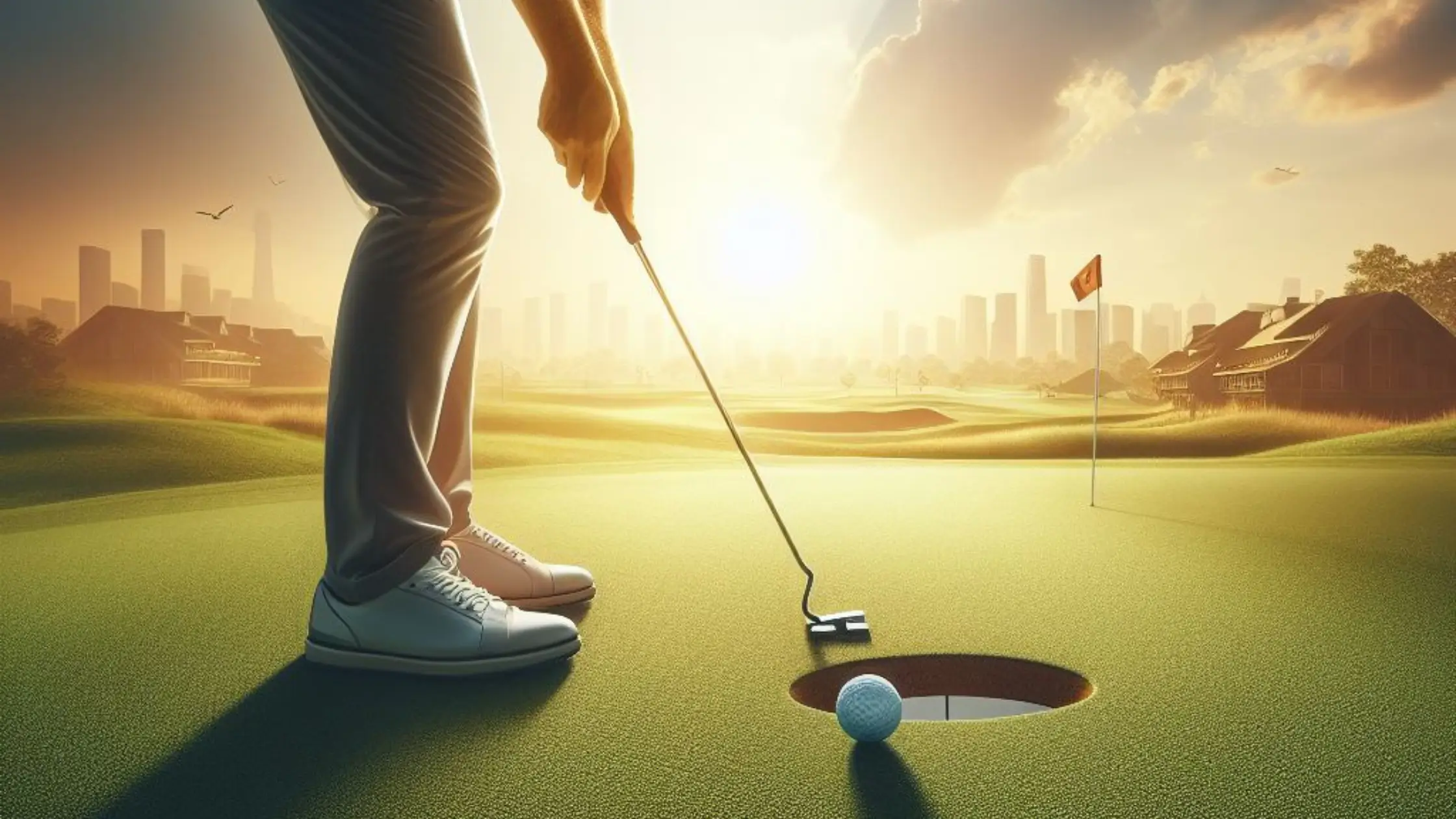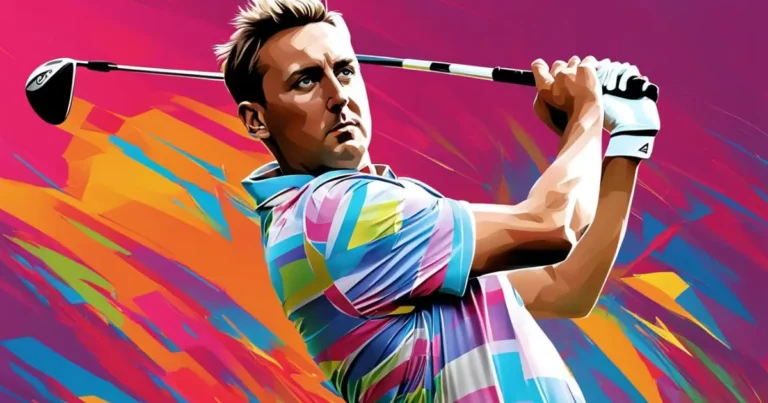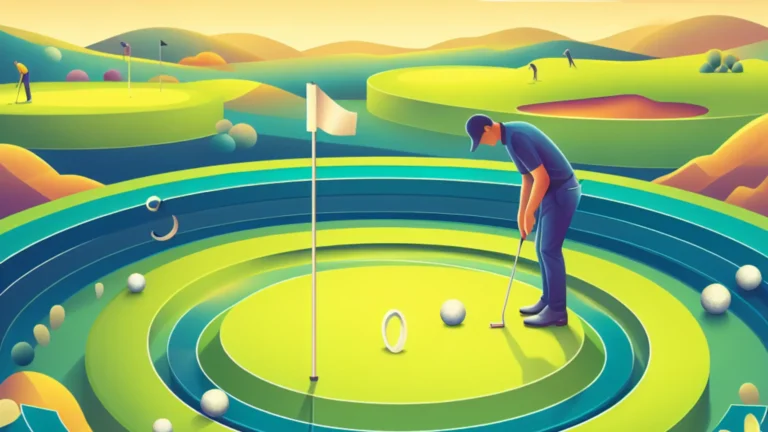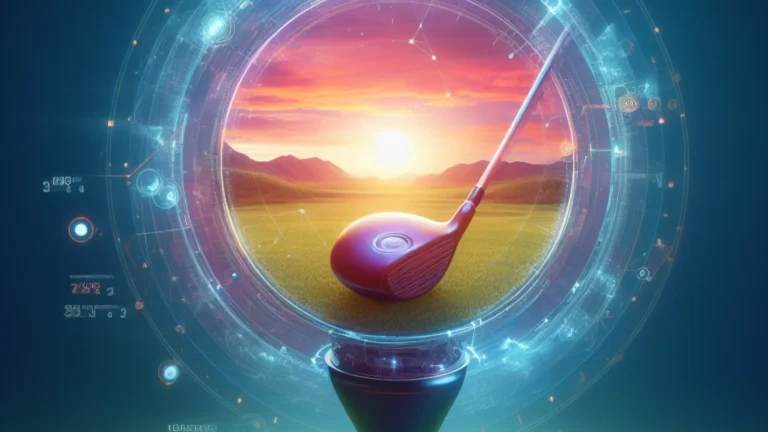Pulling Putts Left: Improving Your Stroke to Sink More Putts and Drop Your Scores
If you’ve played a lot of golf, you’ve probably had the painful experience of pulling putts to the left of the hole. Nothing is more stressful than being inches from the cup only to see that little white ball curl helplessly away when you hit the putt.
Fortunately, pulling putts left is one of the most common putting ailments in golf, making it one of the simplest to diagnose and correct in your stroke. Identifying why you’re missing the mark with putts sliding left allows you to make minor adjustments and develop consistent putting that results in those balls finding the bottom of the cup.
Grip Issues Rsulting in Pulled Putts
The way you grip the putter can have a significant impact on the path and direction of your stroke, resulting in putts that tail off target. An improper putter grip sets you up for failure before you even take a stroke. Pay close attention to the following factors that encourage leftward pulling action:
Strong Grip Promotes Close of Clubface
Rotating your palms towards the target at address promotes shutting or closing the clubface during the stroke. With a closed face, the putter blade’s loft encourages balls to launch to the left rather than rolling end-over-end down your target. Focus on keeping your palms down rather than forward and your club face square.
Right Hand Below, Left on Grip
Your right hand in the lower position creates the sensation of a twist in the stroke and closes the face angle. Instead, aim for even grip pressure between hands, with the right hand more on top to allow for free release during impact. Do not restrict the right hand underneath.
Rushing the backstroke
An overly quick, jerky motion that pulls the putter away from the ball has an impact on both distance and direction consistency. It also encourages your right hand to take over, dominating the stroke path and causing the club face to point left of the target at impact. Make slow practice strokes and a smooth, even tempo key points of technique.
Poor Grip Pressure and Wrist Action
A tight, restrictive grip or cocking/flicking of the wrists during impact prevents the blade from being released freely. Any tension or torque causes the face to close as you stroke the ball. To improve accuracy, use a solid but neutral hold, a flat left wrist, free hinging of the right wrist, and passive arms.
Setup Issues that Result in Mishit Putts
Aside from gripping errors, poor setup conditions can spell doom for putts that begin off line due to incorrect aim, balance, and posture issues. Check for these common position faults that add up to left-bound putts.
Misaligning Your Body
If your shoulders are pointing left of the target at address, your stroke path will most likely follow that inside-to-out direction. Stance alignment is essential, so position your putter head behind the ball on the target line. Then, ensure that your body angles are parallel to that path for the online stroke.
Poor Weight Distribution and Lateral Balance.
Balance centered on the balls of your feet keeps you moving into your stroke, allowing proper sequencing from your legs and core. If your weight shifts back, your body resists forward movement, necessitating hand and arm manipulation that distorts the putt. This usually manifests as lateral sway, pull stroke, and closed face.
Inconsistent Ball Positioning
Inconsistent setup is often the cause of missed putts to the left and right. A ball positioned too far forward encourages an on-plane backswing but an in-to-out downward blow on follow through, which closes the face. Set the ball just off center at the heel of the stance for solid contact, with the face naturally releasing to the target.
Stroking Faults that Send Putts off Line
Now for the most important aspect of correcting pulled putts: the stroke itself. Even the most well-practiced swing technique can unravel on a pressured putt if key movement fundamentals are not ingrained. Watch out for these major stroke flaws when pulling putts to the left:
Overactive Right Hand During Impact
As the stroke approaches impact with the right wrist in flexion, an aggressive right hand causes face closure or even full-flipping as the club face passes the ball. Feel the triangle of arms and shoulders move as one unit, allowing the putter’s head/face to freely release toward the target post impact without being manipulated by hands.
Tension in the Hands, Wrists, and Arms
Any tension in the grip or stroke adds torque, which typically closes the putter face and ends a putt to the left. Focus on tension-free movement and a “light switch” sensation in the handle. Solid grip pressure is generated more by the shoulder socket than by deliberately powering and steering the blade with the hands or wrists.
No Forward Press or Inside Path
Quiet hands and arms with minimal leverage point the blade directly left, with no gradual dynamic loft to get the ball on track before curling left. Use a slight forward press, and feel your hands lead a hair at address. Stroke inside the gold ball first, then shallow just past impact to roll forward.
Lack of Arc and Acceleration
A pull stroke moves straight back, then straight through, keeping its path to the left of the target line. Allow the putter to hinge into a slight inside arc during takeaway, then return to the initial arc as the right wrist hinges through impact. There is no manipulation, only a flowing rhythm.
Drills and Techniques to Treat Pulled Putts
Correcting an overactive right hand, face closure, and inside-to-out stroke path will help eliminate pulled putts on the left. Here are key practice concepts that reinforce proper technique and result in a more consistent roll:
Impact Bag Drill
To ensure the stroke is squarely on-path, place an alignment stick in the ground at an angle behind the ball and contact it with the putter during the follow-through. The disruption of the stick shows the face closing immediately after impact.
Mirror & Laser Line Drill
Checking positions down the target line with a mirror or laser aids in the detection and correction of issues such as club face angle, arc, direction, and tempo, which reopen repeatedly in strokes resulting in mishit left putts.
Chalk Line Drill
Use foot spray or chalk to draw a line across your ball. Putt normally, then spray perpendicularly to create “cross-hairs” on the ball.Misaligned new lines indicate whether the putter face was oriented to the left or right of the target line during impact.
Impact Label Drill
Using a label sticker on the clubface sweet spot, you can make repetitive strokes while instantly analyzing impact qualities to determine why the face is closing. Center impact with label indicates proper release; left or right indicates face manipulation errors to be eliminated.
Toe Up/Down Drill
Changing the angle of the toe at address aids in the sensation of correct face release in the stroke: toe up encourages proper rotation of the toe down and around during impact, correcting closing. Toe down evens out releasing flat rather than closing as the face contacts the ball.
Conclusion
Pulling putts left can keep you from feeling the rush of making a clutch putt to win a tournament or shoot your career-best score. Rather than losing confidence in the flat stick, focus on the specific causes associated with your grip, setup, and stroke habits. Awareness and repetition of proper positions quickly train your mind and muscles to strike with your face squarely on the path with each and every putting stroke.
So, the next time you step up to a short knee-knocker, cozy those putts up sweet and tight, watch them fall with authority, and put an end to your left-pulling putt troubles. Believe in your technique, stick to the process, and enjoy the chain reaction of one center-cut roll after another sailing on line and lighting red numbers on the card.







